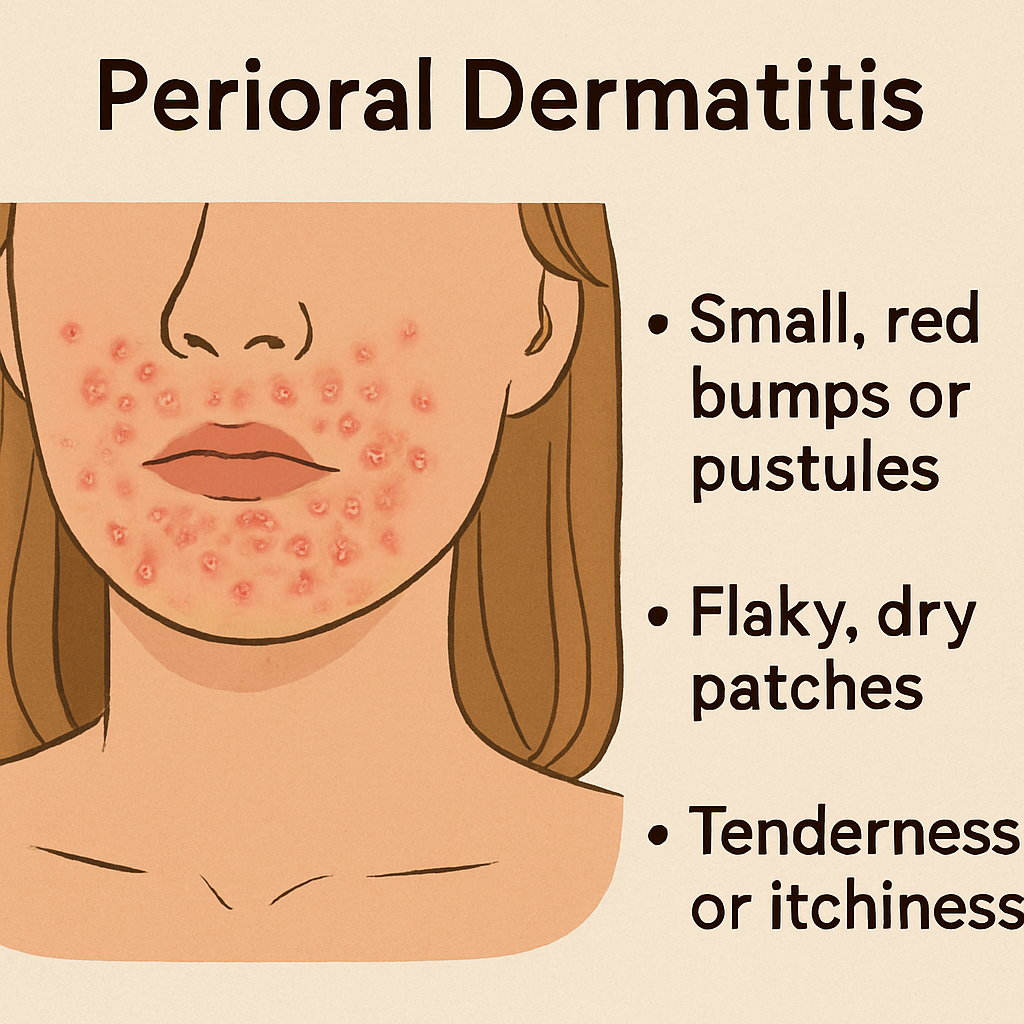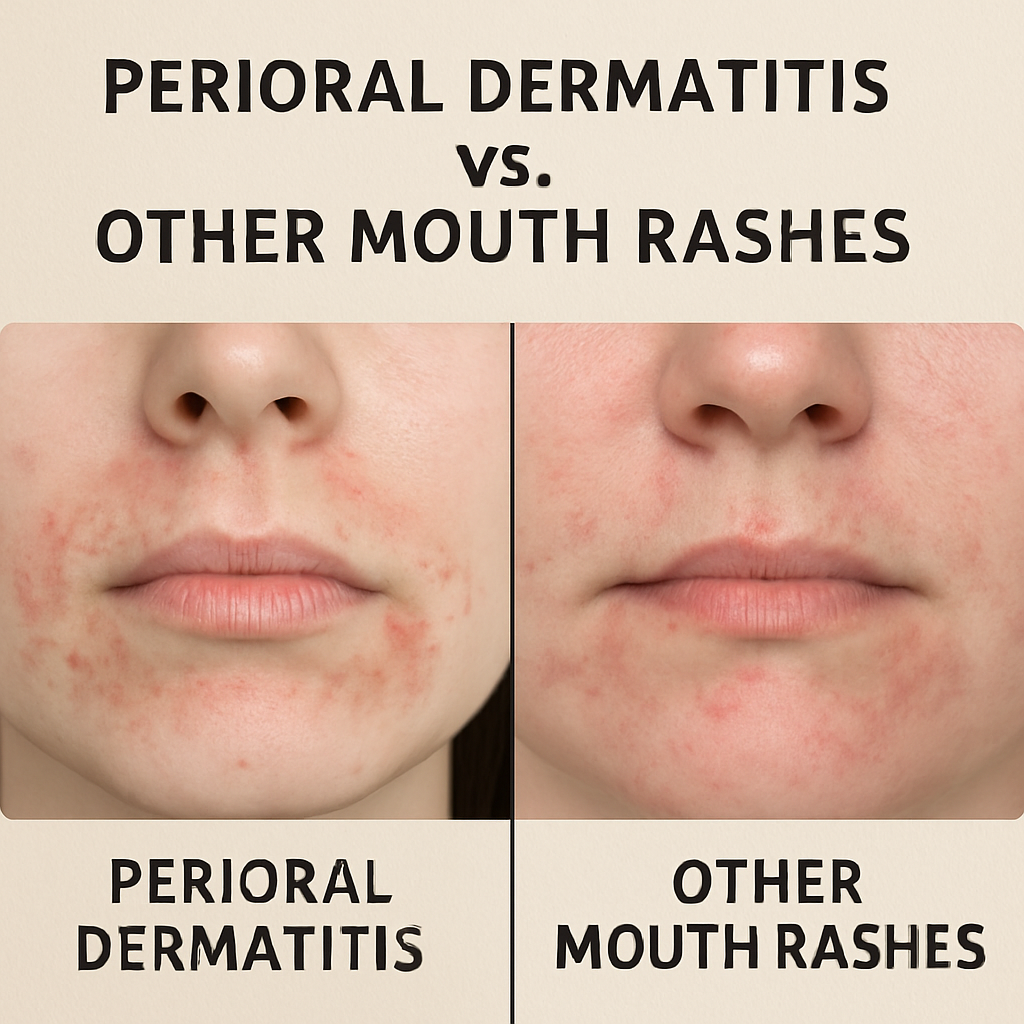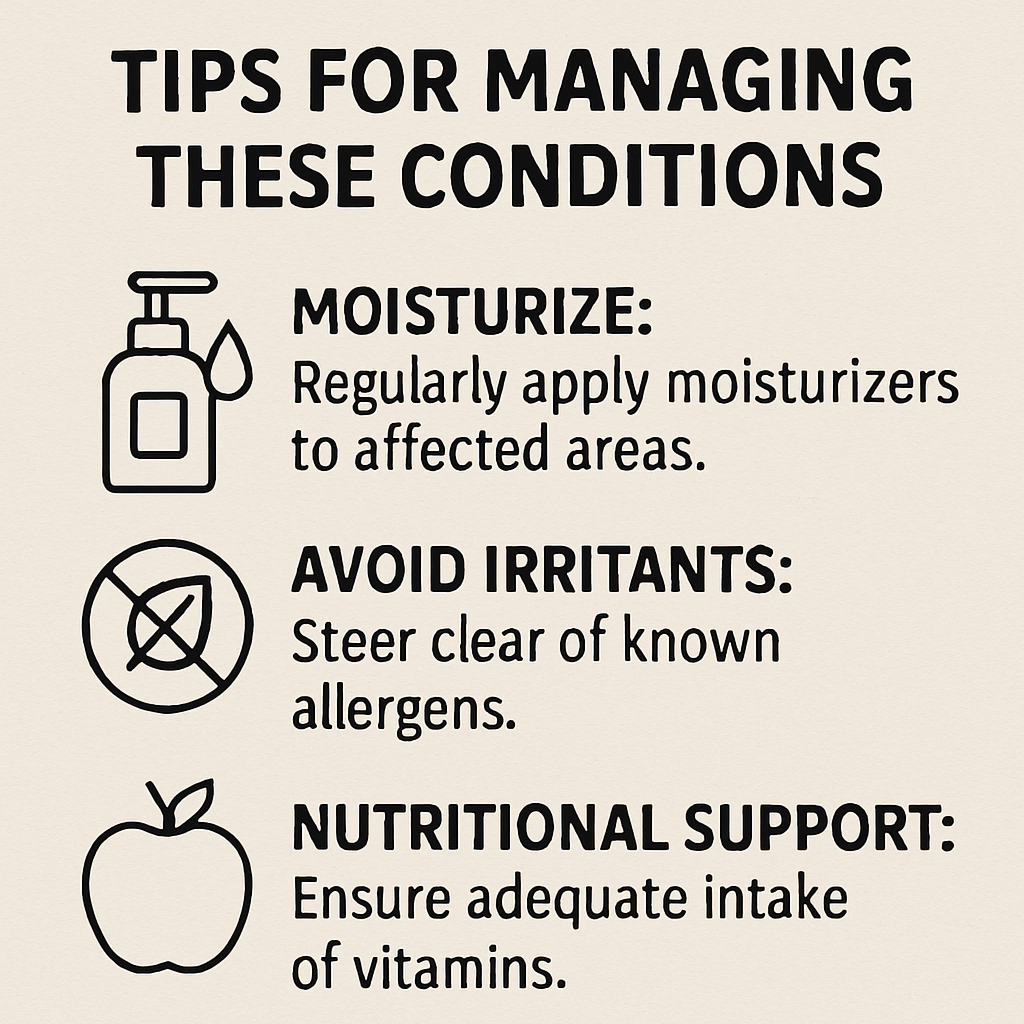
Perioral Dermatitis: Symptoms and Diagnosis Explained
Share
We Solve Skin believes gentle, consistent care + clear information make managing sensitive skin easier.
Perioral Dermatitis: Symptoms and Diagnosis Explained
Perioral dermatitis is a common skin condition that affects many people. It often appears as a rash around the mouth. This condition can cause discomfort and concern for those who experience it.
Understanding the symptoms and diagnosis of perioral dermatitis is crucial. It helps in managing the condition effectively. Knowing the difference between perioral dermatitis and other similar conditions is also important.
This article will explore the symptoms and diagnosis of perioral dermatitis. It will also cover related conditions like angular cheilitis and dry skin around the mouth.
What Is Perioral Dermatitis?
Perioral dermatitis is a specific type of rash that primarily affects the areas surrounding the mouth. It can extend to the nose and eyes in some cases. This condition is more common in women and young adults, although anyone can develop it.
The rash caused by perioral dermatitis typically includes red bumps. These bumps sometimes resemble acne but are indeed different. You may also see dry, flaky patches and feel a burning sensation.
Key features of perioral dermatitis include:
- Red bumps around the mouth
- Dry, flaky skin patches
- Burning or itching sensation

Common Symptoms of Perioral Dermatitis
Perioral dermatitis manifests through several noticeable symptoms that can be bothersome. The most common symptom is a rash featuring small, red bumps. These bumps are often mistaken for acne.
The rash can become tender or itchy, causing discomfort. You might notice dry patches that flake or peel. While the rash mainly appears around the mouth, it can occasionally spread near the nose or eyes.
Symptoms frequently associated with perioral dermatitis include:
- Small, red bumps or pustules
- Flaky, dry patches
- Tenderness or itchiness
In severe cases, the affected skin area may feel tight. This sensation can worsen if you're using topical steroids.

Causes and Risk Factors
The exact cause of perioral dermatitis is still unclear. However, several factors may increase its likelihood. Topical steroid creams are often linked to triggering flare-ups.
Certain facial products, particularly heavy creams and lotions, can exacerbate the condition. Some individuals may also have an overreaction to ingredients in cosmetics or sunscreen.
Potential risk factors include:
- Long-term use of topical steroids
- Allergy to facial products
- Hormonal changes and stress
Women and young adults are more prone to developing perioral dermatitis. Environmental factors like wind and heat can further irritate the skin, worsening symptoms.
How Is Perioral Dermatitis Diagnosed?
Diagnosing perioral dermatitis primarily involves a clinical examination. Your doctor will assess the appearance of the rash and consider your medical history. A detailed discussion about skincare habits is often included.
In some cases, further tests may be needed. These can help rule out other conditions with similar symptoms. Laboratory tests are less common but may include skin swabs or allergy testing.
Key diagnostic steps include:
- Clinical examination of the rash
- Review of medical and skincare history
- Possible skin swabs or allergy tests
Early diagnosis helps in effective management and preventing further complications. Always consult a healthcare professional for accurate diagnosis and treatment guidance.
Is Perioral Dermatitis Contagious?
Perioral dermatitis is not contagious. It cannot spread from one person to another through direct or indirect contact.
This means that personal interactions with someone who has perioral dermatitis are safe. The rash is a skin condition linked more to lifestyle and individual health factors than to infection.
Perioral Dermatitis vs. Other Mouth Rashes
Perioral dermatitis is often confused with other mouth rashes such as angular cheilitis. It's crucial to differentiate these conditions for effective treatment. Each condition has unique characteristics and causes.
Common Mouth Rashes Include:
- Angular Cheilitis: Characterized by cracked corners of the mouth.
- Contact Dermatitis: Caused by an allergic reaction to a substance.
- Eczema: Presents as dry, itchy skin patches around the lips.

While perioral dermatitis primarily affects the skin around the mouth, angular cheilitis focuses on the corners. Knowing these differences helps in seeking proper medical care and choosing appropriate treatment options.
Related Conditions: Angular Cheilitis and Dry Skin Around the Mouth
Angular cheilitis and dry skin around the mouth are common concerns. Angular cheilitis manifests with sores on the corners of the mouth. These sores can be painful, often due to infections or deficiencies. Dry skin around the mouth can arise from environmental factors or allergies.
Tips for Managing These Conditions:
- Moisturize: Regularly apply moisturizers to affected areas.
- Avoid Irritants: Steer clear of known allergens.
- Nutritional Support: Ensure adequate intake of vitamins.

Both conditions require targeted care for relief. Consulting a healthcare professional can ensure correct treatment and prevent complications from worsening. Understanding these issues can empower individuals to maintain healthier skin.
Treatment Options for Perioral Dermatitis
Treating perioral dermatitis involves a tailored approach. Discontinuing topical steroid creams is often the first step. These steroids can worsen the condition when used on the face.
Doctors might prescribe antibiotics to treat the rash. Both topical and oral antibiotics can be effective. This approach aims to reduce inflammation and bacteria.
Common Treatment Methods:
- Stop Topical Steroids: Avoid facial use.
- Antibiotics: Prescribed by healthcare providers.
- Gentle Skincare: Use non-irritating products.

by Onela Ymeri (https://unsplash.com/@onnela_)
Recovery can be slow, but consistent care is key. Following medical advice ensures better results. Partnering with a dermatologist can tailor the treatment to individual skin needs.
Home Care and Prevention Tips
Caring for skin with perioral dermatitis involves simple daily habits. Gentle cleansing can prevent irritation. Use lukewarm water and mild cleansers.
Avoid harsh skincare products that can exacerbate symptoms. Choose products labeled for sensitive skin. This minimizes flare-ups.
Prevention Strategies:
- Moisturize: Keep skin hydrated.
- Avoid Irritants: Skip harsh soaps and cosmetics.
- Protective Measures: Use a physical barrier against wind and sun.
💧 Gentle Recovery Support with Vitamin C
As redness and irritation settle, focus on barrier-supportive hydration and antioxidants. Our Vitamin C Serum is lightweight and fragrance-free to help even tone and support skin while you keep your routine simple.
📖 Learn when and how to reintroduce Vitamin C in our guide: Vitamin C Serum for Glowing Skin — How to Use It.
Following these tips helps maintain healthy skin. Consistency is crucial for prevention and management. Adapting your skincare routine can make a big difference.
When to See a Doctor
Persistent or worsening symptoms warrant medical attention. If you notice spreading rash or increased discomfort, consult a healthcare provider.
Additionally, if home remedies don't bring relief within weeks, seek professional advice. Timely intervention can prevent complications and speed up recovery. It ensures you receive the most effective treatment.
Frequently Asked Questions
How long does perioral dermatitis last? The duration varies. It can last for weeks to months if untreated.
Is perioral dermatitis contagious? No, it isn't contagious. You can't pass it to others.
How to treat perioral dermatitis? Treatment includes stopping steroid creams and using prescribed antibiotics.
For more details, see our treatment section above. Always consult a professional for tailored advice.
Educational content only. Not medical advice. Please consult your healthcare provider.